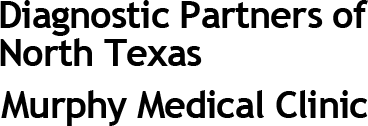Anxiety
Anxiety can be described as a feeling of uneasiness, fear or worry. Many of us experience anxiety at some point in our lives. It is a normal reaction to a perceived threat or stress. However, in case of excessive anxiety, a person can find it hard to overcome a stressful or threatening situation comprehensively. As a result, they may freeze or begin to fear and avoid the situation.
Anxiety is a sudden feeling of fear that a person experiences when faced with a situation or event they are not accustomed to. People with anxiety disorder are more likely to underestimate their ability to handle any situation and predict the outcome of the situation based on their past experiences.
Generally, people with anxiety disorder experience the following reactions:
- Physical response: An intense physical reaction which stimulates the adrenergic nervous system causing the symptoms such as rapid heartbeat, sweating and tremors.
- Cognitive response: The individual may perceive negative thoughts and doubt one's ability to cope with a situation. The most common thought in the individual’s mind would be “I can’t cope with this”.
- Behavioral response: It includes avoidance or atypical behavior such as restlessness, aggressiveness, and irritability in response to a stressful event.
- Emotional response: The patient may experience higher levels of emotional distress.
Causes
There is no single cause of anxiety; several factors may lead to the development of anxious thoughts and behavior, which include:
- Genetic factors: If you have history of anxiety in your family, your chances of developing an anxiety disorder are high.
- Biological factors: Research has suggested that imbalance of certain chemicals in the brain increase your likelihood of developing anxiety
- Your life experiences: A number of stressful life situations such as family or relationship problems, work issues, abuse, and stress from school may trigger anxiety.
- Your personality: People with certain distinct personalities such as being shy, having low self-esteem and poor ability to cope with any situation are more prone to anxiety than others.
- Your thinking style: Some people with certain styles of thinking may experience excessive levels of stress and anxiety. Perfectionistic individuals or those in constant control of their emotions are at a higher risk of anxiety when faced with a stressful situation.
- Your behavioral styles: People with some characteristic behavioral styles are more likely to experience anxiety. People who have a habit of avoiding any situation are unable to cope with stressful situations.
Symptoms
The symptoms of anxiety can vary in severity from person to person. The characteristic symptoms of anxiety include ongoing worry or thoughts that cause significant distress or interfere with activities of daily life. Other symptoms include confusion, trembling, sweating, dizziness, increased heartbeat, difficulty breathing, stomach problems, impatience, avoidance behavior, and irritability.
Treatment
Psychotherapy, especially cognitive-behavior therapy is an effective treatment for anxiety. Cognitive-behavior therapy can help change your thinking and behavior. This therapy assists in identifying unhealthy, unrealistic beliefs and behavioral patterns and changes your behavior by changing the way you think and perceive things.
The first step in managing anxiety is to identify the situations that trigger stress or anxiety and determine the way you deal with them. A diary can be used to keep a track of your symptoms.
Some of the effective techniques for addressing the symptoms and managing the anxious thoughts and behaviors include:
- Breathing techniques: When you are anxious your breath rate increases causing unpleasant feelings. Breathing exercises should be practiced to help slow down your breathing and relieve the symptoms of anxiety. You can perform this exercise by slowly inhaling through your nose and exhaling slowly through your mouth. This breathing exercise can be repeated for 2 to 3 minutes.
- Relaxation techniques: Relaxation exercises help release muscle tension and combat symptoms of anxiety. You can learn relaxation techniques with the help of a psychologist or other health professional. These can also be learnt with the help of books or CDs.
- Thought management exercises: These exercises are considered in people disturbed with ongoing or repeated distressing thoughts. These exercises help replace the unpleasant thoughts with pleasant ones. Thought replacement helps substitute the troubling thoughts with reassuring or coping statements. Mindfulness techniques help distract from an unpleasant thought and focus attention on a pleasant thought or experience. There are many types of thought management techniques which depend on your type of anxiety. Your psychologist will decide the most useful technique for you.
Lifestyle changes: Lifestyle modifications to reduce stress and anxiety include regular indulgence in pleasant activities, exercising regularly, reducing alcohol and caffeine intake, and improvising on your time-management skills. Devise a realistic plan but be flexible in your daily plan. Ensure some rest time and leisure activities daily.





